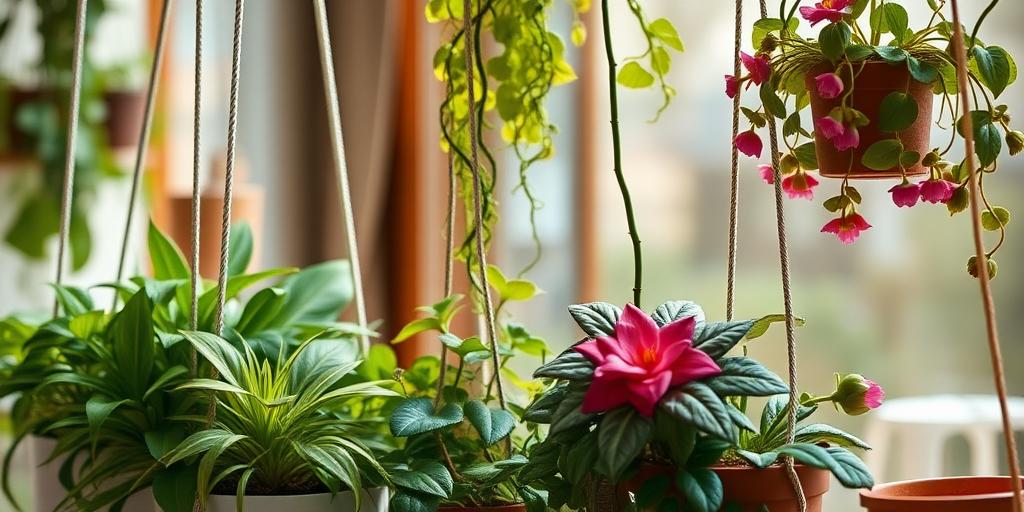
Best Fertilizer for Hanging Plants: Boost Growth and Blooms
Discover the best fertilizer for hanging plants to enhance growth and blooms! Learn about organic, liquid, and slow-release options, plus expert tips for lush, vibrant plants.
Introduction
Hanging plants add a touch of greenery and elegance to any space, but keeping them thriving requires the right nutrients. Did you know that fertilizing hanging plants can increase bloom production by up to 50%? Whether you’re growing trailing pothos, vibrant petunias, or delicate ferns, choosing the best fertilizer is key to their health. In this guide, we’ll explore top-rated fertilizers, application techniques, and pro tips to help your hanging plants flourish!
Why Hanging Plants Need Special Fertilization
Hanging plants have unique needs when it comes to fertilization. Unlike plants in the ground, they grow in a confined space with limited soil volume. This means nutrients get used up much faster, leaving your plants hungry if you don’t replenish them regularly.
Limited Soil Space Means Faster Nutrient Depletion
Because hanging baskets hold less soil, the available nutrients deplete quickly. Every time you water, some of the essential minerals wash away, leaving the plant with fewer resources to draw from. That’s why frequent feeding is crucial—otherwise, your plants may start showing signs of deficiency, like yellowing leaves or stunted growth.
Balanced N-P-K Ratios Keep Plants Thriving
A well-balanced fertilizer with the right nitrogen (N), phosphorus (P), and potassium (K) ratio is key. Nitrogen promotes lush foliage, phosphorus supports strong root development and blooms, while potassium improves overall plant health. Too much nitrogen can lead to leggy growth with weak stems, so finding the right balance is essential.
Fertilization Prevents Weak, Leggy Growth
Without proper nutrients, hanging plants stretch toward the light, becoming thin and spindly. Regular fertilization ensures they grow compact and bushy instead of long and straggly. A steady supply of nutrients keeps stems sturdy and foliage vibrant, making your hanging baskets look full and healthy.
Types of Fertilizers for Hanging Plants
Not all fertilizers work the same way, and choosing the right type can make a big difference in how well your hanging plants thrive.
Liquid Fertilizers – Fast Absorption for Frequent Feeding
Liquid fertilizers are a popular choice because they’re quickly absorbed by the roots. They’re ideal for frequent feeding—usually every 1-2 weeks—since they provide an instant nutrient boost. Just mix with water and apply during regular watering.
Granular Slow-Release Fertilizers – Low-Maintenance Option
If you prefer a “set it and forget it” approach, slow-release granular fertilizers are perfect. These pellets release nutrients gradually over weeks or even months, reducing the need for constant reapplication. They’re great for busy gardeners who don’t want to fertilize weekly.
Organic Fertilizers – Eco-Friendly Choices
For those who prefer natural options, organic fertilizers like compost tea, fish emulsion, or worm castings provide nutrients without synthetic chemicals. They improve soil health over time and are gentle on plants, though they may take longer to show results.
Water-Soluble Powders – Customizable Strength
Water-soluble powders are easy to mix and allow you to adjust the concentration based on your plant’s needs. They dissolve quickly in water and are absorbed fast, making them a flexible option for different growth stages.
Best Fertilizers for Hanging Plants in 2025
With so many options available, here are some of the top-rated fertilizers for hanging plants this year:
Miracle-Gro Water Soluble All Purpose Plant Food – Best for Quick Results
This classic fertilizer is a favorite for its fast-acting formula. It’s great for a wide range of plants and delivers noticeable growth within days. Just mix it with water and apply every 1-2 weeks.
Osmocote Smart-Release Plant Food – Best Slow-Release Option
Osmocote’s coated pellets release nutrients gradually over several months, making it ideal for low-maintenance care. It’s perfect for those who don’t want to worry about frequent feedings.
Fox Farm Liquid Nutrient Trio – Best for Flowering Plants
If your hanging plants are bloom-heavy (like petunias or fuchsias), Fox Farm’s nutrient trio provides the extra phosphorus needed for abundant flowers. It’s a premium choice for serious gardeners.
Espoma Organic Indoor Plant Food – Best Organic Pick
For an all-natural option, Espoma’s organic plant food is gentle yet effective. It’s made from plant-based ingredients and works well for both foliage and flowering plants.
Schultz All-Purpose Plant Food – Best Budget-Friendly Choice
If you’re looking for an affordable yet reliable fertilizer, Schultz’s all-purpose formula is a solid pick. It’s easy to use and works well for most hanging plants.
How to Fertilize Hanging Plants for Maximum Growth
Applying fertilizer correctly ensures your plants get the most benefit without the risk of damage.
Best Time of Day to Fertilize
Morning is the ideal time to fertilize because plants absorb nutrients best when they’re actively growing. Avoid fertilizing in the heat of the day, as it can stress the plant.
How Often to Fertilize
Most hanging plants benefit from weekly or bi-weekly feedings during the growing season. Slow-release fertilizers may only need application every few months. Always check the label for specific recommendations.
Proper Dilution to Avoid Root Burn
Over-concentrated fertilizer can burn roots. Always follow the package instructions for dilution. If in doubt, use a weaker solution—it’s better to under-fertilize than overdo it.
Signs of Over-Fertilization and How to Fix It
Yellowing leaves, brown tips, or a white crust on the soil surface are signs of too much fertilizer. If this happens, flush the soil with water to remove excess salts and hold off on feeding for a few weeks.
Seasonal Fertilization Tips for Hanging Plants
Plants have different needs depending on the time of year, so adjusting your fertilization routine is key.
Spring & Summer: High-Phosphorus for Blooms
During peak growing season, use a fertilizer higher in phosphorus to encourage flowering. This is when plants are most active and need regular feeding.
Fall: Reduce Feeding for Dormancy Prep
As growth slows in fall, cut back on fertilization to help plants prepare for dormancy. Too much food at this stage can lead to weak new growth that’s vulnerable to cold.
Winter: Minimal or No Fertilization
Most hanging plants grow very little in winter, so they need little to no fertilizer. Overfeeding during this time can cause nutrient buildup in the soil.
Adjusting Fertilizer Based on Growth Stages
Young plants may need more nitrogen for foliage, while mature plants benefit from extra phosphorus for blooms. Tailor your fertilizer choice to what your plant needs most at each stage.
Common Mistakes to Avoid When Fertilizing Hanging Plants
Even experienced gardeners can make these errors—here’s how to prevent them.
Over-Fertilizing Leads to Salt Buildup
Too much fertilizer causes salt accumulation, which harms roots and prevents water uptake. Stick to recommended doses and flush the soil occasionally.
Using the Wrong N-P-K Ratio
A fertilizer high in nitrogen might be great for leafy greens but terrible for flowering plants. Always match the N-P-K ratio to your plant’s specific needs.
Ignoring Soil pH Levels
Nutrient absorption is affected by soil pH. If your plant isn’t thriving, test the pH—some fertilizers can alter it, making certain nutrients unavailable.
Forgetting to Water Before Fertilizing
Dry soil can lead to fertilizer burn. Always water your plants lightly before applying fertilizer to help distribute nutrients evenly.
Conclusion
Choosing the best fertilizer for hanging plants can make all the difference in their growth and vibrancy. Whether you opt for liquid, granular, or organic options, consistent feeding tailored to your plant’s needs will ensure lush foliage and stunning blooms. Ready to give your hanging plants a nutrient boost? Pick the right fertilizer and watch them thrive!
